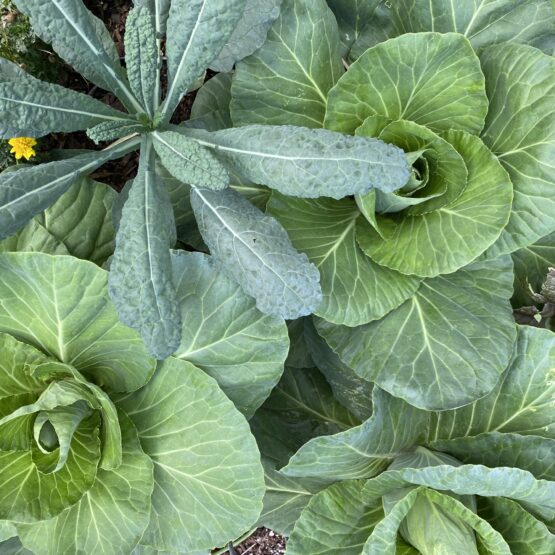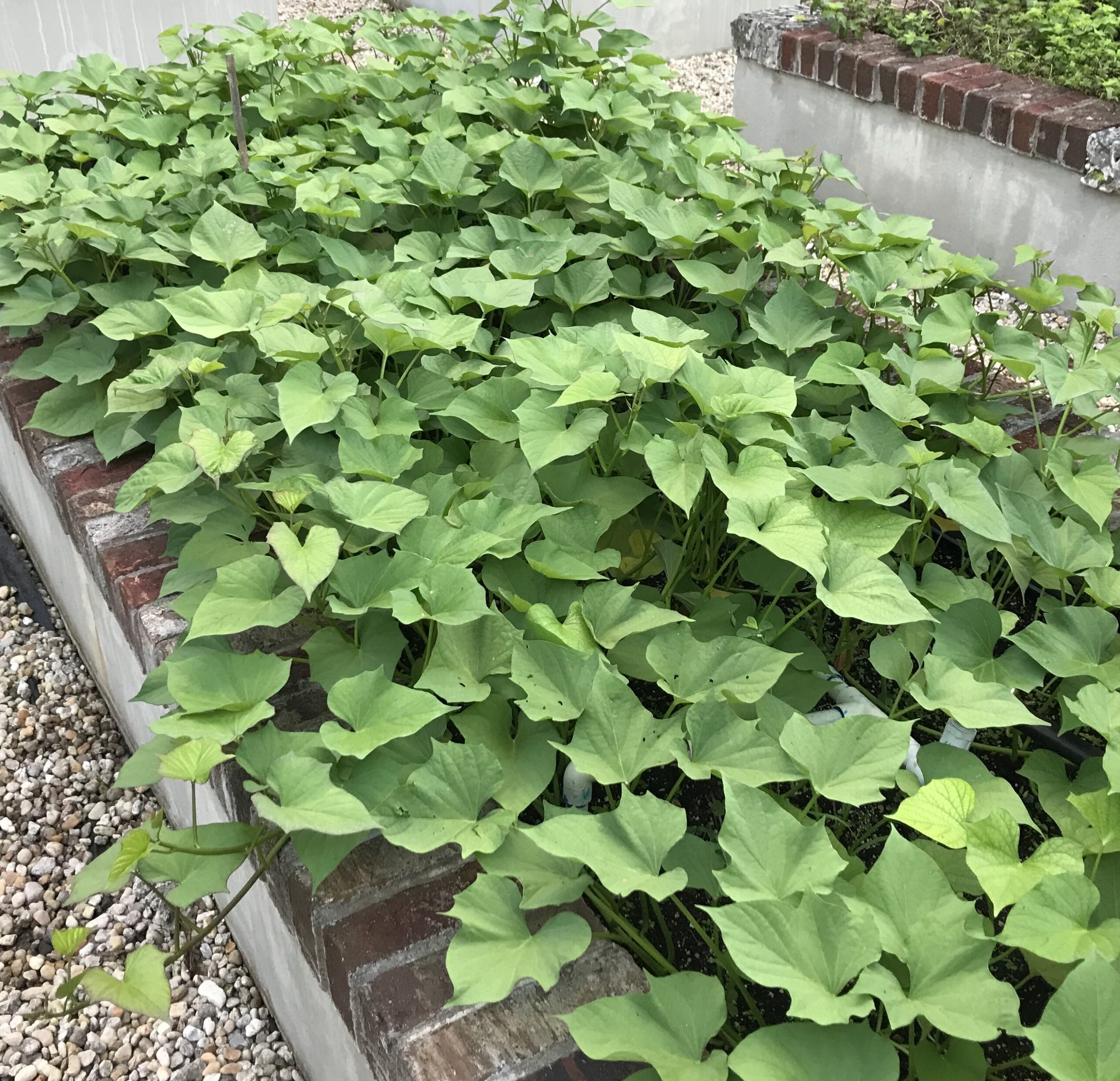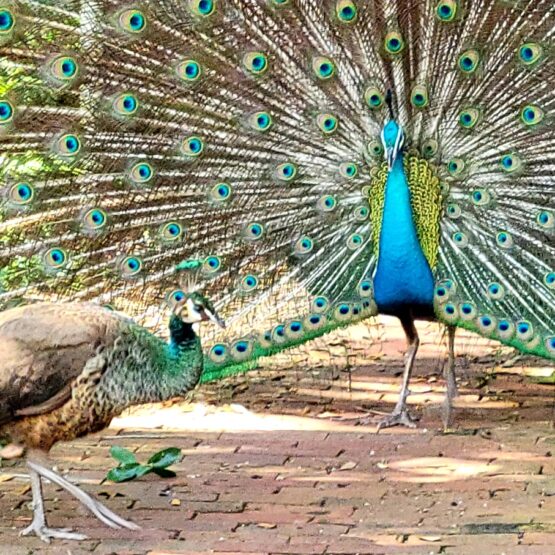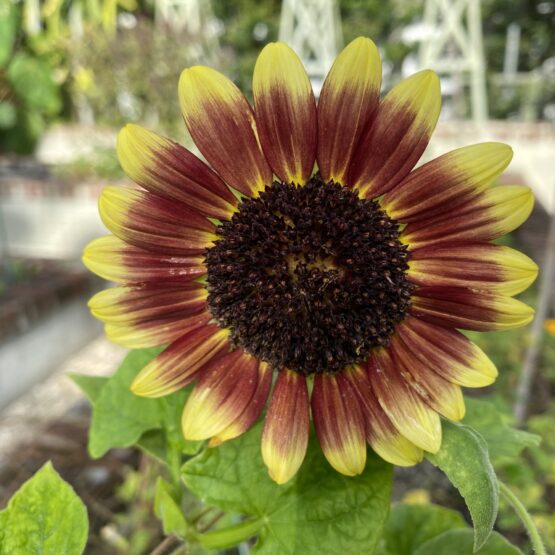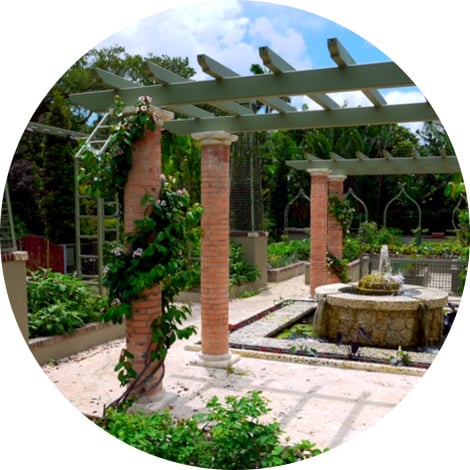As we embark upon our fall season for organic gardening, we’re implementing new strategies based upon past experiences and knowledge we’ve recently gained. Starting mid-summer, we have been solarizing our beds for the first time, using (almost) clear plastic and creating a “greenhouse effect” by tucking it in at the edges. This has minimized our weekly weeding and more importantly, has provided the heat needed to kill off the weeds and any unwanted microorganisms/pests lingering in the soil. We are especially hopeful that it will help to eliminate or at least reduce our nematode population in the soil, as discussed below.
As our fall planting gets underway, we will leave the beds covered right up until the time we need to use each of them (which is ideal given our late start on solarizing). Here is a very useful, concise set of directions for solarizing from the Univ of Florida’s Gardening Solutions website; it contains some good tips which will help us improve our method next season: Soil Solarization.
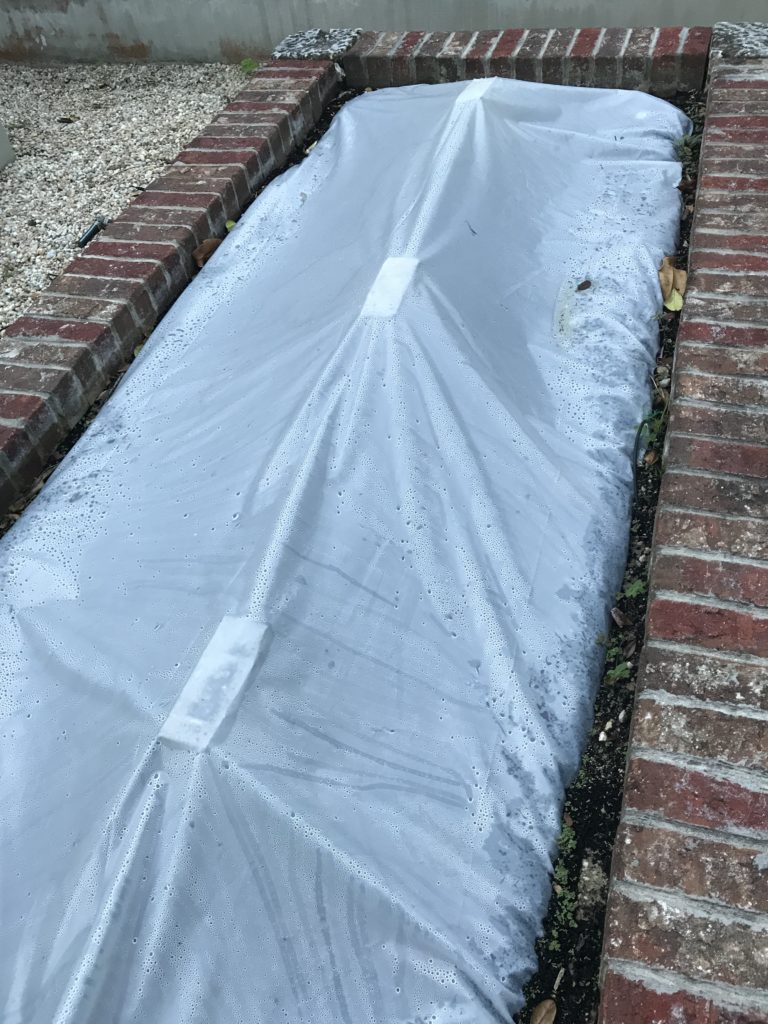
Solarizing garden bed
It is also pond cleaning time – removing all the fish (quite a task!) and relocating them to other viable ponds, emptying the pond, cleaning out algae, trying to get the fountain working again, and researching the right pump/filter system to replace the old one. We are still in the process, as you can see.
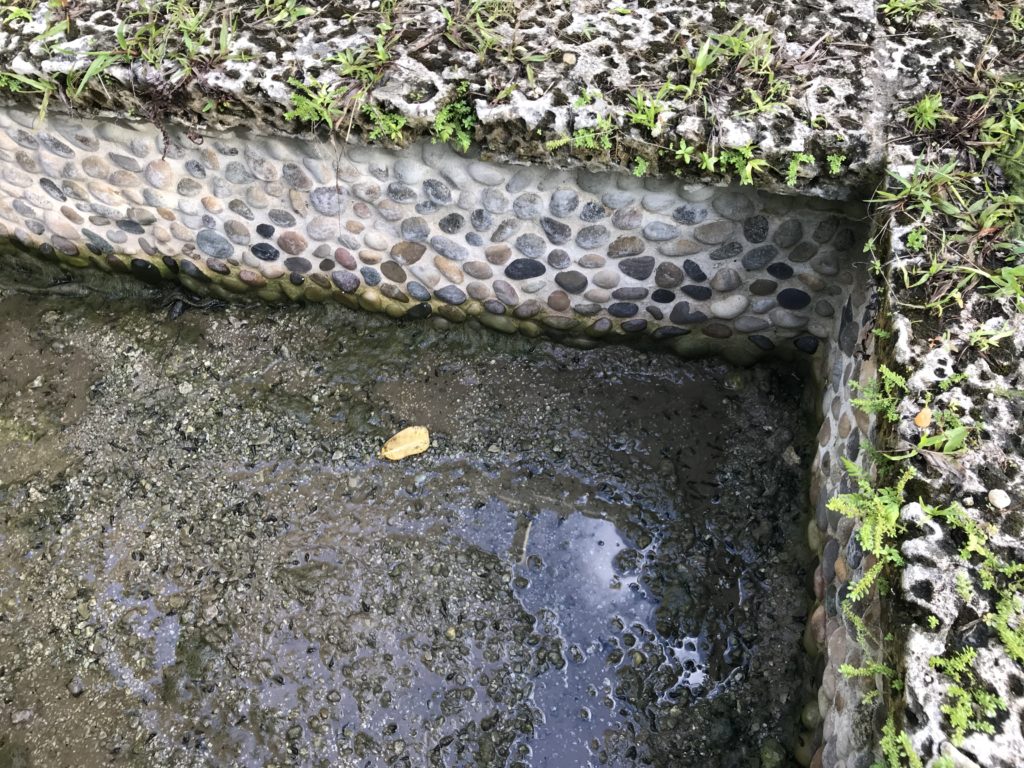
Cleaning out the pond
One nice thing is that the sides of the pond have been perfectly purged of all the algae growth as it dried out in the sun, and the stonework looks beautiful. We can’t wait to refill it and put new fish in, which will include goldfish, algae eaters and a new addition (based on an expert’s recommendation, which should help with algae) called bamboosia – if we can find some; and last but not least, we’ll add pond plants to provide shade and prevent algae growth. We look forward to having a clean and lively pond to start off our new season, and hopefully a working fountain again!
We will be experimenting with watering a different way in the garden this fall season. Again based on expert advice, we will be cutting way back on the frequency of our watering.

Irrigation system
Our beds are on a drip irrigation system, which has been watering five days a week for very short periods of time. We will be watering only on an as needed basis, and will water deeply each time – which has several benefits, including better root growth and less weed growth. In addition, we have been installing valves on several of our beds to manage the varied moisture needs of specific crops. Since over-watering and watering on a shallow basis are hindrances to plant health, we are looking forward to seeing the effects of our change in practices. It’s an experiment!
Proper drainage has been an issue in several of our raised beds since the garden was built. For the first time we completely emptied out one of the beds to assess the drainage (or lack thereof!) and how we might address it. What we found: no drainage was provided for, just hard solid ground at the bottom.
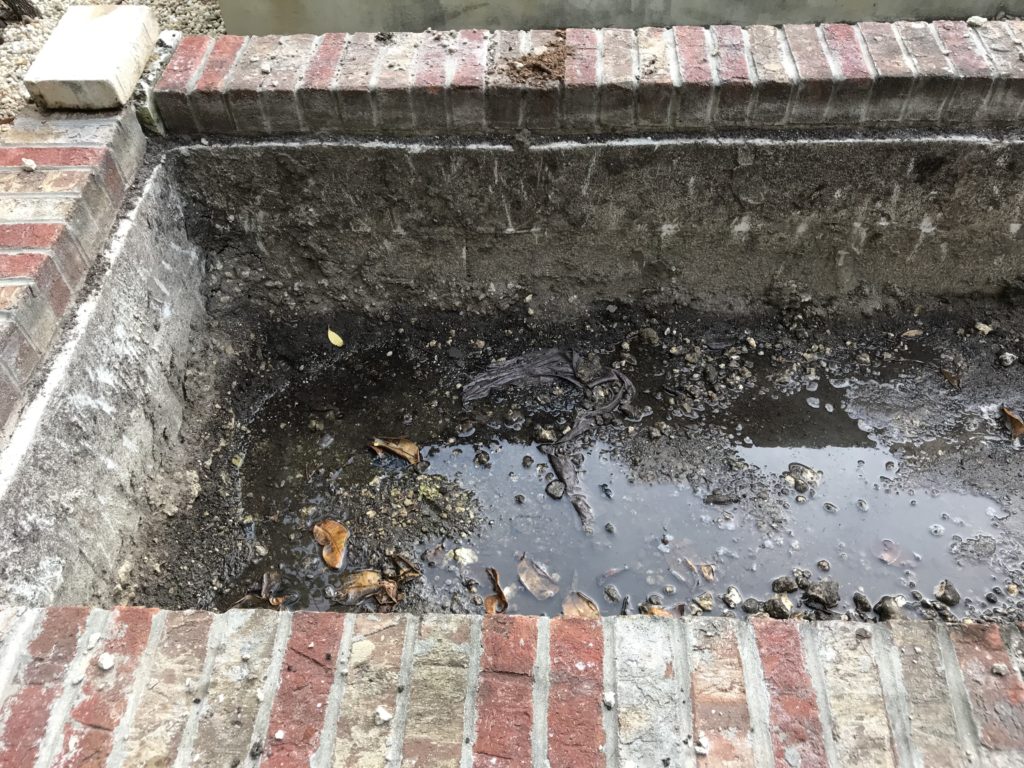
Bed completely emptied
In addition, our garden bed walls are comprised of concrete block which were stuccoed and painted over (for aesthetics) on the outside, so any possible drainage there is completely blocked. This results in the beds remaining too wet and densely packed, which of course adversely affects our plants – most of which thrive in well-drained soil!
To remedy this situation, we will fill the bottom several inches of the bed with small rocks, covered by sturdy, porous landscaping fabric and then approximately 10 inches of potting soil mixed with compost.
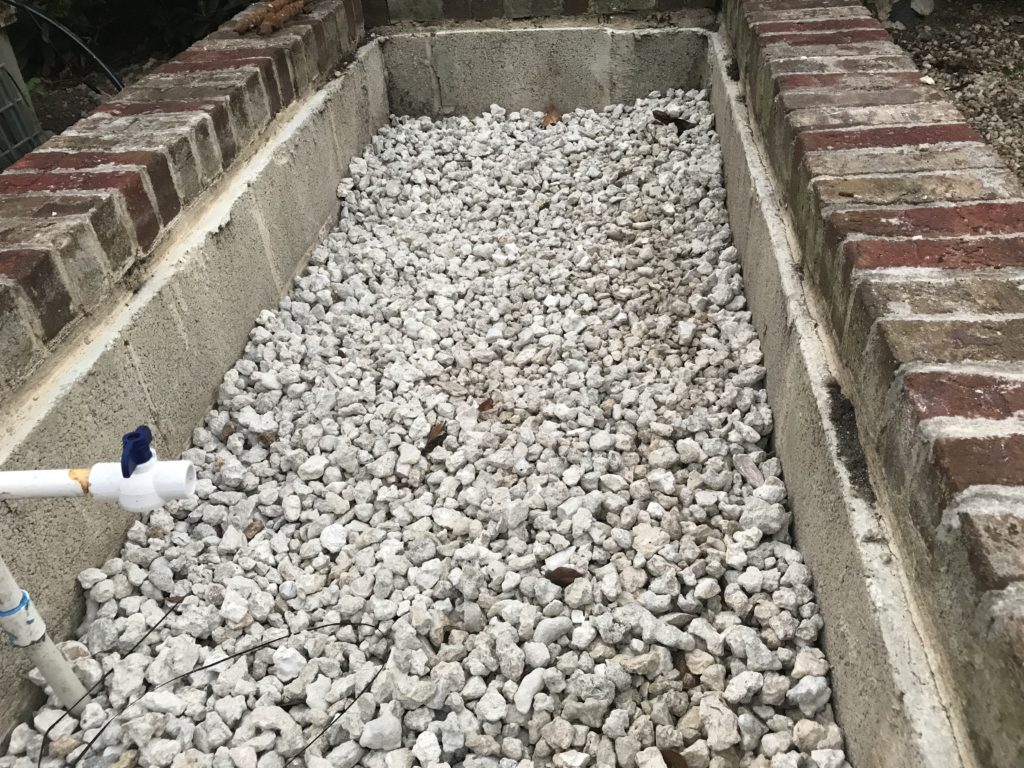
Layer of rocks
Also, if needed, we will drill holes around the bottom of the bed through the stuccoed bricks to increase drainage. Now, for the fall season we plan to do this to just three or four beds as an experiment to see what impact this has on our plantings. Our hope is that all of this work, along with cutting back on watering, will improve the health and growth of our veggies. We shall see!
We learned a whole lot about nematodes this summer after discovering that we have them, probably in many if not all of our garden beds. Nematodes are microscopic organisms that you cannot see in the soil; some nematodes are beneficial or harmless; others are quite destructive. One harmful type (that we apparently have plenty of) are evidenced in the “root knots” that can be found on mature plants, especially certain ones like okras and tomatoes. Nematodes wreak havoc on the root systems of plants, thereby weakening the entire plant. Crops will be stunted in growth and production, and generally look unhealthy. Examining the roots of a sick plant will confirm (or negate) the presence of nematodes.
There is not a lot that can be done to eliminate nematodes; one can take care not to spread them in the garden, and you can be aware of plants that tend to attract them and choose what you plant thereby. As mentioned above, solarizing the beds in the summer is one method for reducing nematodes. Once the plastic sheets are removed, we will refrain from our usual digging and turning the soil, as we don’t want the deeper layers that may still contain nematodes to be brought to the top where new plantings will grow. The prevalence of nematodes in South Florida soils is one reason not to use topsoil for planting and to create a barrier (such as cardboard) between topsoil and the potting media in raised beds. Another strategy we will employ to minimize nematodes is in the beds we have completely emptied of soil – scrubbing the sides of the bed with bleach and then allowing it sufficient time to air out. Dealing with this pest will require diligence and ongoing effort…
So while our garden looks quite dormant at this time of the year, there’s been a lot going on behind the scenes. While the pictures here are not as exciting as the beautiful veggies we grow, you can see that there is a lot of planning, preparation and even experimentation to continue having a successful garden. And now comes that very exciting time, when we start planting for the new fall season! Hurray! Stay tuned!
